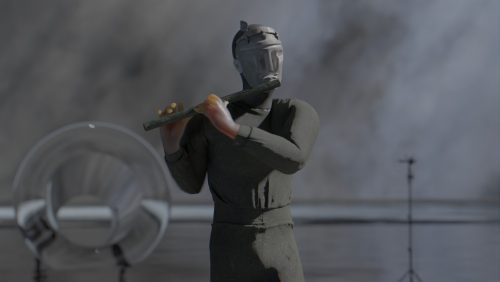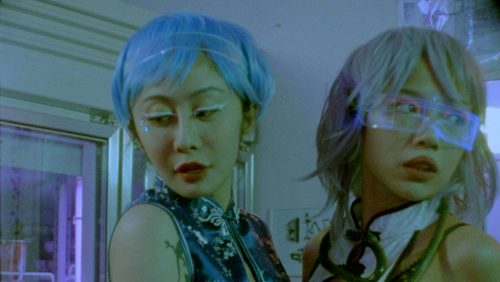
Galamb Thorday, Gemma Solá Sotos, Isabell Kamp, Nora Lube, Thorben Eggers
Tap in Tune
Project Info
- 💙 Nina Mielcarczyk
- 🖤 Galamb Thorday, Gemma Solá Sotos, Isabell Kamp, Nora Lube, Thorben Eggers
- 💜 Fredi Thiele
- 💛 Marco Dirr
Share on

Installation view: TAP IN TUNE, 2024, Nina Mielcarczyk, Leipzig
Advertisement

(left) Isabell Kamp, Are you talking to me?, 2016 - (right) Thorben Eggers Utsuroi 7, 2023

Installation view: TAP IN TUNE, 2024, Nina Mielcarczyk, Leipzig

(left) Nora Lube, Grundansichten_1+2, 2024 - (right) Isabell Kamp, You and me is not you and me but you and me, 2016

Galamb Thorday, O.T. 2024, 100 x 150 cm, oil on canvas

Installation view: TAP IN TUNE, 2024, Nina Mielcarczyk, Leipzig

Detail: Isabell Kamp, Intuition, 2019

(left) Galamb Thorday, Monolog, 2024 - (right) Gemma Solá Sotos,“Everything_Everywhere.mp3“, 2024

Installation view: TAP IN TUNE, 2024, Nina Mielcarczyk, Leipzig
TAP IN TUNE
As part of the annual group show, gallery Nina Mielcarczyk presents works by the artists Thorben Eggers, Isabell Kamp, Nora Lube, Gemma Solà Sotos and Galamb Thorday in a mix of painting and object art as well as their intersections.
Empty glasses, blurred with their slightly dirty, bubblegum-pink background. The impression is almost as if a fading piece of music is still lingering. It is unclear whether the glasses have just been emptied or are waiting to be refilled. It is unclear whether the motif refers to a past or future temporality, from which Gemma Soto’s Escena IV/Reunión creates an ambivalent tension. The title, translated as Scene IV/Gathering, also leaves us in doubt as to whether we are looking at a faint moment of nostalgia or the trace of a future commonality. It could perhaps also be equated with an everyday, longed-for time and the effusive attempts to break out of it.
These attempts to break out can be found in the various facets of the collected works. They can be seen in Lube’s objects, which question the underlying logic of the sorting(-out) of everyday life with the help of her Lost&Found method. The photographs “Grundansichten” could be seen as a twist on that, as she stages self-made obejcts, as if they’re the lost ones.
Eggers and Thorday meanwhile are playing on two sides of a coin of observations on everyday life. Thorday sees the sacralized, accelerated product still in streaks, which promises to free us from the tristesse, while Eggers captures the effects of this paralyzing relationship on our brains and muscles: the figurative completely blurred, in the wavebroken reflections of Utsuroi 7 [gradual change (of light and shadow)]. This incompatibility of the normal trot with the attempted miracle is then perhaps brought together in Kamp’s objects, in which glamorous sophistication and mundane everyday life are cleverly interwoven—emphasized by their technically virtuoso material processing, which, in combination with the witty titles (Are you talking to me?), get to the root of the matter.
Brought together, the space opens up in the attempts at communication between the different perspectives, which examine it for possible breaks and connections. And these joint attempts to concretize something that doesn’t really exist certainly remain just that: Attempts. Attempts to capture something that only exists in its fleetingness. “Das Eigentliche” always remains unresolved, everything may point towards one another, allowing each visitor to make their own associations and experiences. Or, as Donna Haraway puts it: “This is a dream not of a common language, but of a powerful infidel heteroglossia.” This heteroglossia can perhaps create a productive disquiet in the trot, much like the black swan: on the verge of bursting its own frame, pressing, fracture-creating, more of a canon than a choir, in which different measures can coincide, inclined to synchronize or not, like lovers lying together, heart to heart.
Fredi Thiele




